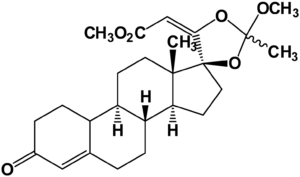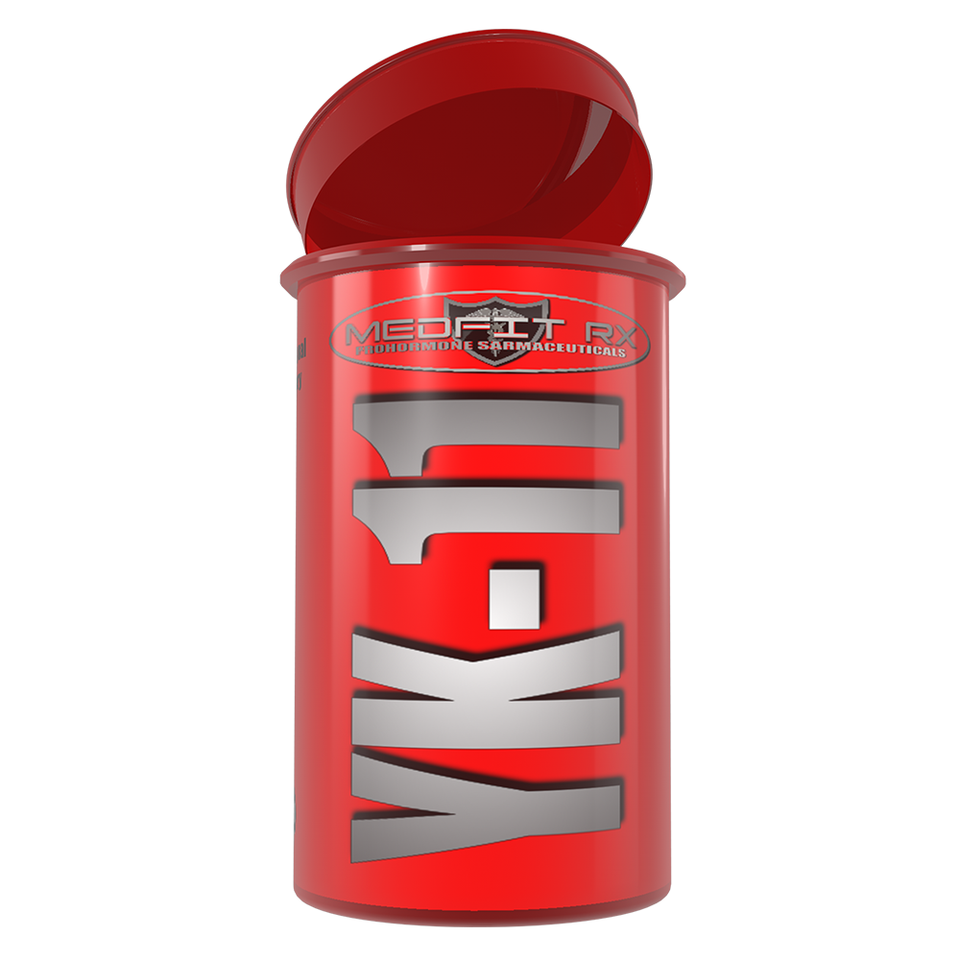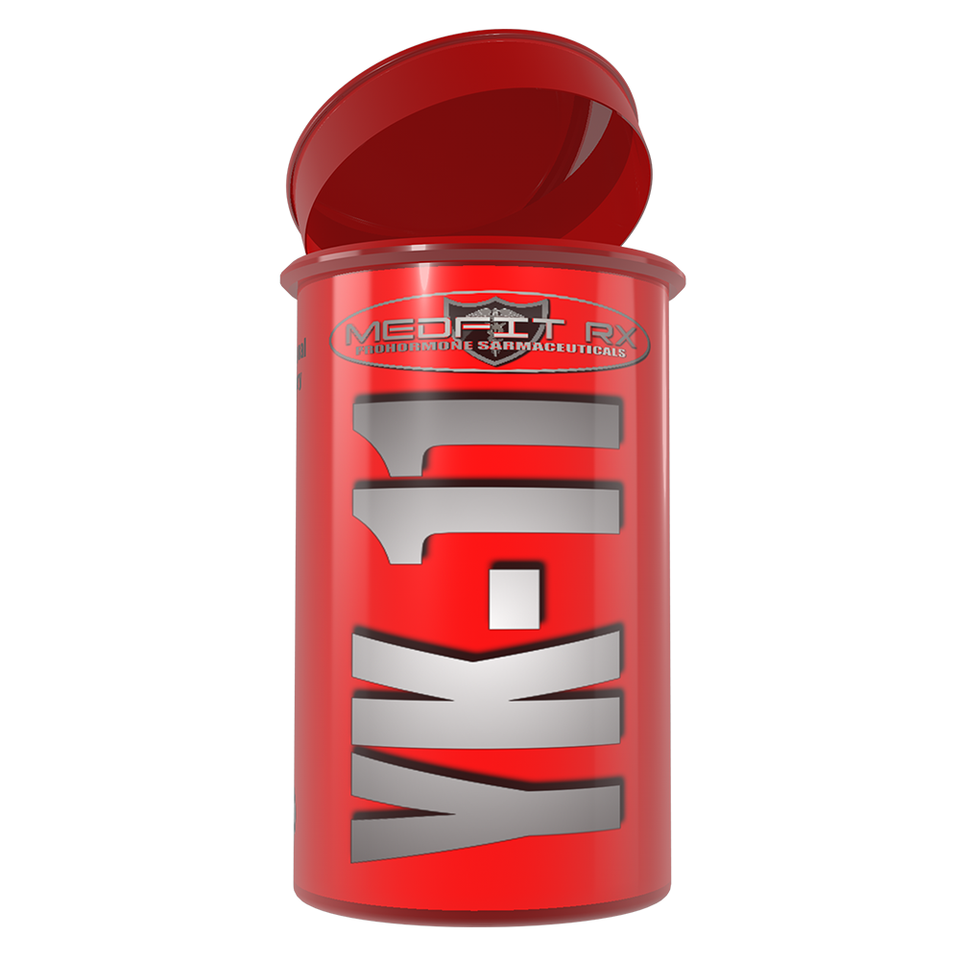A new little-known substance has appeared on the “gray market” of supplements: YK11 . The reason for the lack of information on this compound is that only in vitro data are available without data from animal studies.

In 2011, Kanno et al. . from Toho University published the results of a preliminary study, which reported that (17a, 20E) -17.20 – [(1-methoxyethylidene) bis (oxy)] – 3-oxo-19-norpregna-methyl ester 4,20-diene Β-21-carboxylic acid (YK11) is a partial agonist of the androgen receptor, suggesting that this compound is a selective androgen receptor modulator (SARM). [1]
There has been controversy among AAS / PH / DS users about how to classify YK11. Is this really a new steroid or a real SARM? Now the debate is less about the actions of this compound, but more about its chemical structure.
So far, all SARM compounds that we have observed are steroid-free.
A common characteristic of steroids is the presence of four condensed rings of carbon atoms, three rings with six atoms [A, B, C] and a ring [D] with five atoms in an arrangement similar to cyclopentanoperidrophenanthrene.
YK11 possesses this structure, which makes it unique among all SARMs observed to date (with the exception of 17-hydroxy-4-aza-androstane-3-oni , which was patented in 2009 , is not available on the market also due to the fact that there is nothing in its actions). This brings us to the previous question: is YK11 a new steroid or is it a real SARM?
The conflict is that there is no universally recognized nomenclature for SARMs, but there is a widespread nomenclature for steroids. Since YK11 does not have data on its action obtained in animal or human studies, to answer the question we can rely on what the law considers a steroid or not (in the USA based on DASCA 2014), and I play for strength this classifies YK11 like a new steroid.
Researchers in only two published studies were funded by a prestigious Japanese government foundation. If you receive money from such an institution, you are unlikely to settle for just two publications.
Most SARMs have few androgenic side effects. This does not appear to be the case for YK11, as reported in 2013 by Kanno et al. . muscle cells produce more anabolic factors when exposed to 500 nmol of YK11 than the same muscle cells that are exposed to 500 nmol of DHT. [2]
YK11 is a partial androgen receptor agonist that has a greater effect on elevating follistatin than DHT. As is well known, what follistatina does is inhibit the action of myostatin.
Myostatin inhibits the actions of Myf5, MyoD and myogenin. Myf5, MyoD and myogenin induce muscle growth. This is great news for athletes, but there is a negative aspect of YK11 as a partial androgen receptor agonist.
YK11 may inhibit the action of testosterone and DHT on the androgen receptor as they compete for receptor binding.
This is something to consider if you want to use YK11, as there is a risk that the effectiveness of other concurrent AASs may be reduced as YK11 competes for binding to androgen receptors.
However, in an environment where testosterone and DHT are low, YK11 may be beneficial as there is less risk of androgen receptor saturation.
However, even if there is a risk that YK11 may be an antiandrogen and that it may be less anabolic than DHT and / or testosterone, exposure to follistatin can neutralize this potential deficiency.
This is something to consider when deciding whether to use YK11 with other androgens.
Is YK11 effective?
From personal experience, I can say that it is an effective, but also suppressive compound (as you would expect, given that it is a progestogen derivative with a chemical similarity to norethinodrel, a progestogen) similar to any other anabolic (same) it can say for all currently available SARMs and of course all PH and DS on the market.
When used at a dose of 6 mg per day (divided into 3 doses of 2 mg per day), some strength gains and some modest increases in muscle mass can be expected (based on nutrition, of course)
At this low dose, many suggest using this molecule as a continuation of a cycle with a stronger compound (some added it after a trenbolone cycle).
So it works well as a bridging molecule to keep the AAS gain much more powerful.

As an “autonomous” molecule for significant gains in strength and muscle mass, it is proposed to increase the dosage to 9-12 mg / day (the recommended daily dose of YK11 on the market is 4 to 12 mg).
Amateur empirical data suggests that the half-life of YK11 is about 6 hours, although it seems closer to 10 hours based on the plasma levels maintained in these test subjects (data must be taken from pliers).
Keep in mind that there is no animal data available for this compound, and looking at the structure, we can observe the presence of 4 methyl groups that can make YK11 a hepatotoxic compound. Therefore, it is best not to take risks with doses not exceeding 12 mg / day, at least until this compound has been more thoroughly analyzed in practice.

